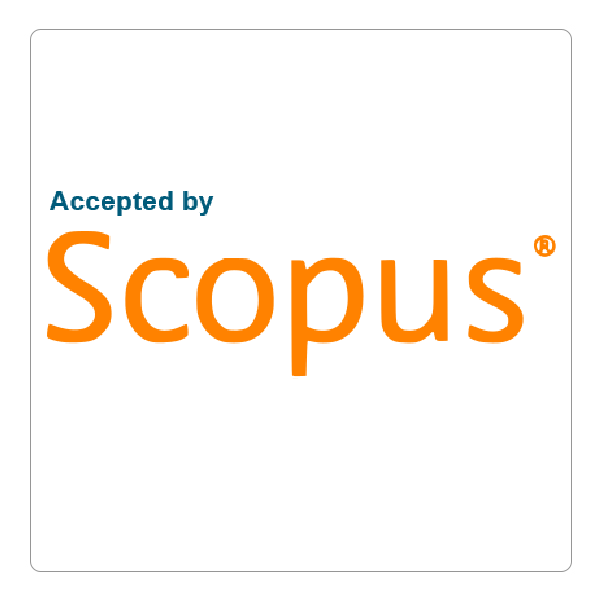How to Cite This Article
Hasan, Dathar Abas and Jader, Umed Hayder
(2023)
"Semantic Lung Segmentation from Chest X-Ray Images Using Seg-Net Deep CNN Model,"
Polytechnic Journal: Vol. 13:
Iss.
2, Article 1.
DOI: https://doi.org/10.59341/2707-7799.1712
Document Type
Original Article
Abstract
Implementing an accurate image segmentation to extract the lung shape from X-ray images is a vital step in designing a CAD system that diagnoses various types of chest diseases. Lung segmentation is a complex process due to the blurred regions that separate the lung area and the rest of the image. The conventional image segmentation techniques do not meet the ambitions to achieve precise lung segmentation. In this paper, we utilized the Seg-Net semantic segmentation model as a practical approach to distinguish the lung region pixels in X-ray images. The model involves an encoder network that extracts the data from the input images, and a corresponding decoder network that maps the low-resolution encoder feature maps to full input-resolution feature maps for pixel-wise classification. The model is trained and tested using 539 X-ray images from Shenzhen’s publicly available dataset. The robust performance of the Seg-Net model is investigated in terms of global accuracy, dice coefficient, and intersection over union. The model achieved global accuracy (97.71%), dice coefficient (96.95%), and Jaccard index (94.08%). The experimental results indicate that the Seg-Net model is an effective tool for performing complicated segmentation tasks and extracting regions of interest such as lung area, eye vessels, lesions, and tumors from medical images.
Accept Date
28/08/2023
References
[1] Murugappan M, Bourisly AK, Prakash NB, Sumithra MG, Acharya UR. Automated semantic lung segmentation in chest CT images using deep neural network. Neural Comput Appl 2023;35(21):15343e64. http://dx.doi.org/10.1007/s00521- 023-08407-1.
[2] Reamaroon N, Sjoding MW, Derksen H, Sabeti E, Gryak J, Barbaro RP, et al. Robust segmentation of lung in chest x-ray: applications in analysis of acute respiratory distress syndrome. BMC Med Imag 2020;20(1):116. http://dx.doi.org/10. 1186/s12880-020-00514-y.
[3] Kamble B, Sahu SP, Doriya R. A review on lung and nodule segmentation techniques. 2020. p. 555e65. http://dx.doi.org/ 10.1007/978-981-15-0694-9_52.
[4] Saood A, Hatem I. COVID-19 lung CT image segmentation using deep learning methods: U-Net versus SegNet. BMC Med Imag 2021;21(1):19. http://dx.doi.org/10.1186/s12880- 020-00529-5.
[5] COVID-19 diagnosis systems based on deep convolutional neural networks techniques: a review. In: Dino HI, Zeebaree SRM, Hasan DA, Abdulrazzaq MB, Haji LM, Shukur HM, editors. International conference on advanced science and engineering (ICOASE); 2020 23-24 Dec. 2020; 2020. http://dx.doi.org/10.1109/ICOASE51841.2020.9436542.
[6] Zhang X, Liu X, Zhang B, Dong J, Zhang B, Zhao S, et al. Accurate segmentation for different types of lung nodules on CT images using an improved U-Net convolutional network. Medicine 2021;100(40):e27491. http://dx.doi.org/10.1097/md. 0000000000027491.
[7] Krithika Alias AnbuDevi M, Suganthi K. Review of semantic segmentation of medical images using modified architectures of UNET. Diagnostics (Basel) 2022;12(12). http://dx.doi. org/10.3390/diagnostics12123064.
[8] Agrawal T, Choudhary P. Segmentation and classification on chest radiography: a systematic survey. Vis Comput 2023; 39(3):875e913. http://dx.doi.org/10.1007/s00371-021-02352-7.
[9] Hamad ZH, Lung TM. Region segmentation using modified U-net architecture. Eurasian J Sci Eng 2022;8(3):14. http://dx. doi.org/10.23918/eajse.v8i3p25.
[10] Ait Skourt B, El Hassani A, Majda A. Lung CT image segmentation using deep neural networks. Procedia Comput Sci 2018;127:109e13. http://dx.doi.org/10.1016/j.procs.2018. 01.104.
[11] Pang T, Guo S, Zhang X, Zhao L. Automatic lung segmentation based on texture and deep features of HRCT images with interstitial lung disease. BioMed Res Int 2019;2019: 2045432. http://dx.doi.org/10.1155/2019/2045432.
[12] Chanda PB, Sarkar SK. Effective and reliable lung segmentation of chest images with medical image processing and machine learning approaches. In: IEEE international conference on advent trends in multidisciplinary research and innovation (ICATMRI)2020; 2020. p. 1e6. http://dx.doi.org/ 10.1109/icatmri51801.2020.9398450.
[13] Selvan R, Dam E, Detlefsen N, Rischel S, Sheng K, Nielsen M, et al. Lung segmentation from chest X-rays using variational data Imputation. 2020. http://dx.doi.org/10.48550/ arXiv.2005.10052.
14] Abas Hasan D, Mohsin Abdulazeez A. A modified convolutional neural networks model for medical image segmentation. Test Eng Manag 2020;83:16798e808.
[15] Liu W, Luo J, Yang Y, Wang W, Deng J, Yu L. Automatic lung segmentation in chest X-ray images using improved U-Net. Sci Rep 2022;12(1):8649. http://dx.doi.org/10.1038/s41598-022- 12743-y.
[16] Chavan M, Varadarajan V, Gite S, Kotecha K. Deep neural network for lung image segmentation on chest X-ray. Technologies 2022;10(5). http://dx.doi.org/10.3390/ technologies10050105.
[17] Rao Y, Lv Q, Zeng S, Yi Y, Huang C, Gao Y, et al. COVID-19 CT ground-glass opacity segmentation based on attention mechanism threshold. Biomed Signal Process Control 2023; 81:104486. http://dx.doi.org/10.1016/j.bspc.2022.104486.
[18] Badrinarayanan V, Handa A, Cipolla R. SegNet: a deep convolutional encoder-decoder architecture for robust semantic pixel-wise labelling. 2015. http://dx.doi.org/10.48550/ arXiv.1505.07293.
[19] Hashem S, Kamil M. Segmentation of chest X-ray images using U-net model. Mendel 2022;28:49e53. http://dx.doi.org/ 10.13164/mendel.2022.2.049.
[20] Parra Garcia A. Automated lung segmentation in chest X-ray images using deep learning, without encoder-decoder skip connections. 2022. http://dx.doi.org/10.13140/RG.2.2.21401. 08802.











Follow us: